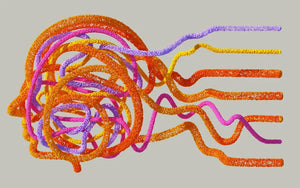As we all know, product titles are an important component of successful advertising. But when it comes to solidifying titles for a product feed, many don’t realize that they’re missing an opportunity to optimize.
That’s why this week, we’re breaking down the ins and outs of title optimization, in order to help you improve search relevancy and the overall user experience!
Raw Titles vs. Optimized Titles
While it may seem logical to simply pull raw titles from your website to use in your product feed, raw titles are often missing important product attributes like:
- Brand
- Color
- Size
These attributes help customers to quickly and succinctly understand what your product is, and whether it’s right for them. Including this information in your product titles rather than making customers search for it, provides an improved user experience that can lead to a better understanding of your product and even an increase in sales.
Creating Optimized Product Titles
So how, exactly, do we turn incomplete product titles into useful bits of product information? Let’s move through the process together, starting with a structure example:

As you can see above, it’s best practice to include: brand + gender (where applicable) + title + product noun + color + size, when optimizing product titles.
Now that we know what attributes we need to include, let’s create an optimized title for the example product below:

Applied Attributes:
- Brand: Brand
- Gender: Women’s
- Title: Lean
- Product Noun: Pants
- Color: Black
- Size: 46
New Optimized Product Title: 'Brand Women’s Lean Pants in Black | Size: 46'
And there you have it! Pretty simple, once you understand the process, right? Remember that the goal is to increase search relevance. So feel empowered to include any and all descriptive words/product attributes that you think may help to increase it!
Note: in order to add a ‘product noun’, click the ‘product type’ field and append it to the titles. If the ‘product type’ doesn’t make sense as an adjective, the description field can be used to select the correct adjective and use it as a ‘product noun’.
Title Formats
While the above exercise is a great example to reference when optimizing titles for apparel, proper title formatting changes depending on the product.
Here are some examples:
- Bags: [Brand] + [Gender] + [Title] + [Product Type] + [Color]
- Apparel: [Brand] + [Gender] + [Title] + [Color] + [Size]
- Foods: [Brand] + [Title] + [Ingredients] + [Size]
- Hard Goods: [Brand] + [Product] + [Attributes]
- Electronics: [Brand] + [Title] +[Product Type] + [Color] + [Identification Number]
- Beauty & Cosmetics: [Brand] + [Title] + [Product Type] + [Size]
Google Requirements
Platforms such as Facebook and Instagram allow for more freedom when it comes to product titles and ad copy, but here are some Google product title requirements to keep in mind:
- Max length: Max 150 characters.
- Unique variant attributes such as: size, color, gender, product type, etc.
- No promotional text!
- No text in all caps!
Note: failing to comply with Google's product title specifications and requirements will result in disapproval of the product.
Tips For Successful Product Title Optimization
Let’s wrap things up with a summary of things to keep in mind for product title optimization:
- Always follow Google's requirements for product title optimization: Google has set guidelines on how to improve product feeds and optimize product titles. To avoid error or account suspension, we highly recommend checking Google’s requirements. https://support.google.com/merchants/answer/6324415?hl=en
- Understand the customer's mindset: In order for your product titles to be more relevant, you have to know what the customers are looking for. Put yourself in their position by thinking about what specific things you would search for when browsing for your own products, and add those attributes accordingly.
- Utilize A/B Testing: The best way to see performance is by testing it. Use A/B testing to make two slightly different product titles, then determine which performs best and use the better title on the next run.
- Use symbols: Symbols such as dashes ( - ), pipes ( | ), and commas ( , ) help to create a better title structure that’s eye-catching and easy to read.
- Use data feed management tools: Tools like DataFeedWatch and Feedonomics can help to optimize product titles more efficiently than Google’s Feed Rules.
- Use the character limit wisely: Google allows for 150 characters for product titles, but we advise using 70–100 characters. This number is more reflective of the amount of the ad that most users will actually see.
Happy optimizing, all!






